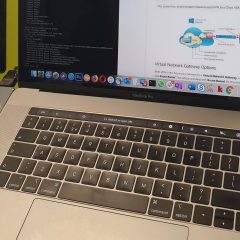HPE MSA Cannot See LUN?
Cannot See LUN KB ID 0001862 Problem I finally got round to replacing the SAN on my test network, I setup the new one via direct cable connection (10Gbps iSCSI DAC). I created vDisks and volumes, presented those volumes. Setup iSCSI bindings in vSphere, all vanilla stuff. ESX hosts could not see the storage LUNS, they could see the SAN, but ‘add datastore’ showed me no available storage. Solution: Cannot See LUN Two...
Change iLO Server Name
Change iLO Server Name KB ID 0001853 Problem I was rebuilding some servers this week and had changed all the iLO settings including the iLO name. But when I connected to the iLO with a browser, it still displayed the ‘old server name’. Even in the ‘Overview’ section is still showed both the old server name and the previous domain. Solution: Change iLO Server Name An internet search turned up plenty of people...
mac OSX: Opening JNLP Files?
KB ID 0001767 Problem I needed to get onto a HPE server’s iLO at work today. I was using Firefox and the .Net extensions no longer work, so I was forced to use Java web start. Annoyingly that opened my Windows 10 VM (that runs in VMware Fusion), then it fell over! So the problem is, I need to be able to ‘RUN’ jnlp file on my MacBook, but there’s no Java application in the applications folder. Opening JNLP Files...
Brocade Switches Getting the Serial Number
KB ID 0001665 Problem If you have fiber channel switches, (regardless of the vendor,) scratch the surface and underneath it’s probably a Brocade. (Unless it’s a Cisco Nexus then you are in the wrong place my friend, move along!) e.g an HP StorageWorks 8/8 SAN Switch (Yeah it’s a Brocade 6505), or an IBM SAN24B-4 Express Fabric Switch (you guessed it, Brocade). If you need to get the serial number for them,...
Find All HP iLOs on your Network
KB ID 0001571 Problem I had to find all the HP iLOs on a client network today, I could have got an IP scanner and then sorted the results for HP devices, but I would have ended up with switches, printers and God knows what else! If only there was a PowerShell command I could use? Solution There is! You will need to download it though, (HPiLOCmdlets-x64,) extract them to your C: drive. Here I’m installing them from PowerShell,...
HP Intelligent Provisioning Cant See USB Media?
KB ID 0001555 Problem Life was simpler when we had DVD Drives and a wallet full of CD/DVDs! I was building an HP DL360 This morning and needed to install Windows. I created a bootable USB with Unetbootin and selected a Windows Server ISO, it wouldn’t boot. So I thought ‘Fine I’ll play the game” I pressed F10 for Intelligent Provisioning. After selecting USB media – the system could not see my USB Drive? ...
HP iLO Upgrade Stops at 99%
KB ID 0001553 Problem While trying to update an iLO on a blade server yesterday, (from 2.07 to 2.33). I uploaded the file it got to 99% then after a while it recycled and repeated the process all over again, and kept going. Solution Well I was on a 2016 Server using IE 11, and the iLO2 is VERY OLD, so I’m guessing it’s a browser problem. I reconnected to the iLO using Firefox, and it worked perfectly. (Note: If using a...
VMware: Change IOPS Limit From 1000 to 1
KB ID 0001532 Problem I got asked to do this by a client this week, HP has requested that this be set for connections to their Storevirtual VSA that had been having some problems. Solution I followed the instructions and was at first confused because I could not see the settings that needed changing? That’s because this only applies if you have MULTIPATHING enabled and set to ‘Round Robin’. So if your storage does...
Disable ATS Heartbeat
KB ID 0001529 Problem After ESX 5.5 Update 2, VMware added ATS Heartbeat.Some vendors, (like HPE SureStore and VSA) recommend that this is disabled. I can’t find any info about whether it’s safe to do this in production, so to be on the safe side I placed the hosts in maintenance mode first. Enter Maintenance Mode Use the following command; vim-cmd /hostsvc/maintenance_mode_enter Disable ATS Heartbeat Use the following...
Virtual SAN: Suppress ‘Datastore Usage on Disk’ Alarm
KB ID 0001527 Problem While deploying a HPE StoreVirtual VSA this week. We noticed all the local Datastore were showing an ‘Alarm’. If you are unfamiliar with Virtual SANs, then you give all the LOCAL Storage to them, which then gets ‘aggregated’ and provided back to the host(s) as fault tolerant clustered storage, like so; Which is great, but the VMware hosts just see that their LOCAL Datastore(s) are full,...










